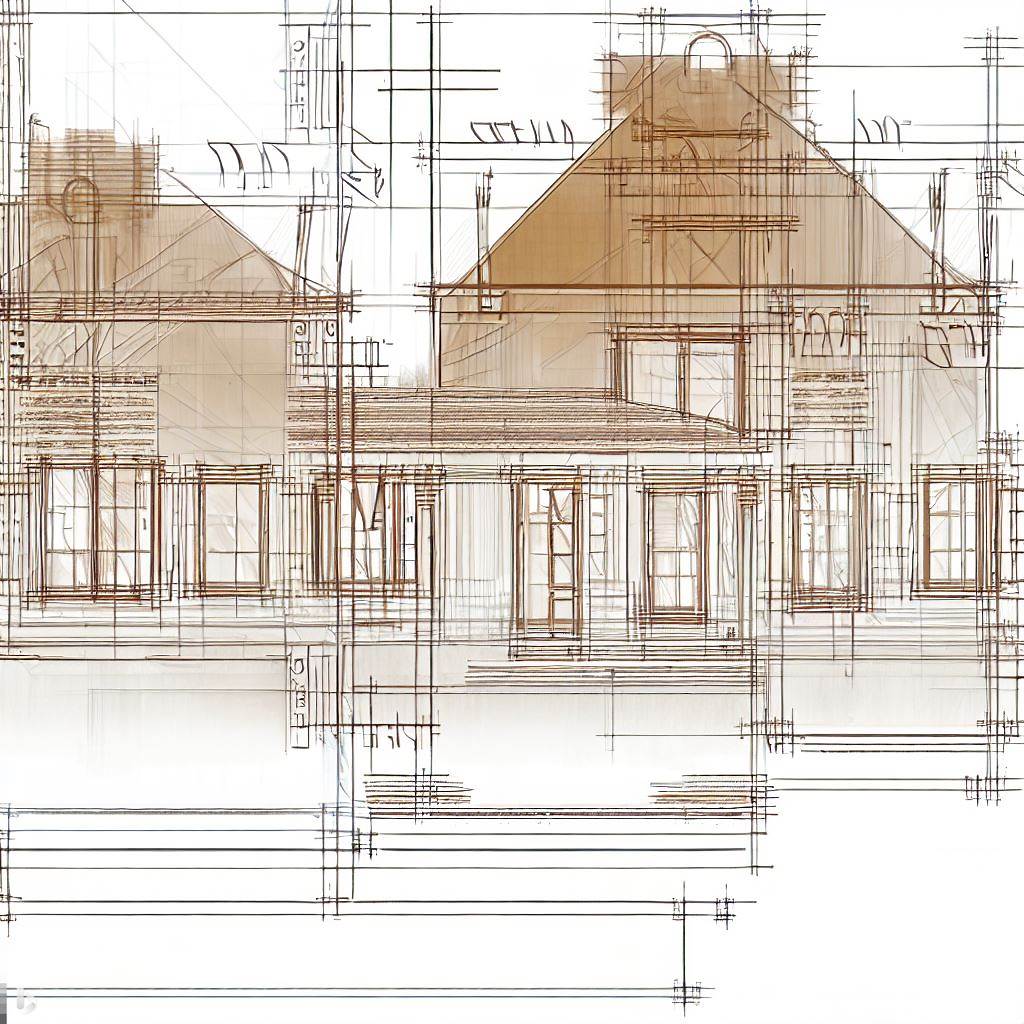What You Should Know About Renovating Older Century Homes in Toronto
You’re staring at cracked plaster walls, uneven creaky floors, and outdated fixtures of your century home and thinking, “It’s time for a renovation.” But let’s be clear: conducting major renovations of an older home isn’t a simple project. It’s a multi-month logistical challenge that involves detailed planning, hundreds of decisions, and a significant investment of time and money.
This article will help you navigate this complex process and get started with the right questions. From before the first swing of the hammer, to the final inspection, we’ll cover what you absolutely need to know about your older home before you renovate.
Advantages of Older Homes
Older homes in the City of Toronto typically have strong structural walls made of two layers of brick, with solid foundations and dimensional lumber for framing (which is thicker than what is available today). The double brick keeps the house cool in the summer and warm in the winter, helping you save on your energy bills. These historic homes were also built to last, and they have more than held their own over the past 100+ years. With some careful review and planning, they are ready to support future changes, upgrades or additions. They also tend to have a classic look that never goes out of style and with a good design, can integrate modern building practices/materials to improve their efficiency and comfort, giving you the best of both worlds.
Managing your older home
Though older Toronto homes have a number of advantages, there are also a number of unique concerns that come with a home renovation of an older house that you usually don’t encounter with new construction or a newer home.
Outdated wiring can limit insurance
For instance, your house might still have knob and tube wiring—a fire hazard that often requires a complete overhaul. Knob and tube wiring, common in homes built from the 1880s to the 1940s, may not meet modern electrical demands and often makes it difficult to secure insurance from most home insurance companies. If you suspect your home has this outdated wiring, a professional electrician should evaluate its safety and whether a full replacement is needed.
Asbestos can be lurking in the walls
Asbestos is a toxic mineral that was frequently used in a variety of household materials like insulation, plaster, paint, tiles, wrap for rad pipes and ductwork. Exposure to asbestos can lead to serious health issues, including certain forms of cancer. If you’re concerned about potential asbestos, lead paint or other hazardous materials in your older home, you should consult a certified abatement professional for evaluation and removal. Depending on the situation, you might need to completely remove hazardous materials from your property or seal them with specialized encapsulants for safety.
Uneven foundations can upset your plans
Older homes in the city can present structural issues that have developed over the years. Foundations can settle and water damage can weaken structural materials and exacerbate settling. Some older Toronto homes are built on filled in or underground rivers or built without proper foundations. When making structural changes, it’s crucial to consult with a structural engineer to assess the state of your foundation’s integrity. This can help you prioritize essential repairs or reinforcements during your renovation project.
Floors and walls can be weakened or altered
While most Toronto older homes have brick exterior walls, many were simply wood framed with an exterior siding or veneer. This framing was typically done as “Balloon Framing” where the exterior wall framing is continuous past each floor, with the floor joists nailed to the side of the wall, rather than sitting on a top plate. This method of framing is structurally sound, but can impact some of the options when it comes to altering the structure or opening the framing and must be taken into consideration in the planning.
In other cases, wooden elements may rot or be damaged by pests, or load-bearing walls might have been compromised by previous alterations, causing sagging or squeaking floors. Further, joists in older homes can often be over-spanned, requiring reinforcement by “sistering” the joists, which strengthens the ceiling and makes it more level. With older homes in Toronto, there are only a handful of different versions of houses that follow a similar floor plan, which can help trained renovation experts anticipate the layout and consider structural limitations.
Old plumbing can leak
In homes built several decades ago, galvanized steel or even lead pipes were the standard for water supply. These materials are prone to corrosion, sediment build-up, and can pose serious health risks. Modern-day water usage can further strain these outdated systems, leading to frequent leaks, water pressure issues, or contaminated water supply. Old drainage pipes can also crack and leak causing mould or flooding. This not only compromises your quality of life but also can disrupt your renovations plans.
With an increase in extreme weather, you may face unexpected flooding (conduct an assessment of your risk). Backwater valves, updated drain pipes, sump pumps, and other waterproofing measures can help limit your flood risk. If you suspect your home has outdated plumbing, a licensed plumber should conduct a comprehensive evaluation. Depending on the severity, partial to full replumbing may be advised.
Outdated HVAC can disrupt your comfort
Dealing with an outdated HVAC system in an older home can be a multifaceted challenge that extends beyond simple upgrades. You may encounter archaic components like old oil drums, asbestos-laden materials, and furnaces in unconventional locations—each presenting its own set of problems that require specialized handling. For example, asbestos materials necessitate professional abatement, while old oil drums could pose environmental hazards and may require complex removal procedures.
The relocation of oddly-placed furnaces in old buildings often involves rerouting ductwork and electrical wiring, and potentially even gas lines. Adding to the complexity, you may find that the existing ductwork is undersized, leading to inefficiencies and uneven climate control. Updated rads, boilers, and pipes can significantly add to your developable space for improved layouts and functionality. While modern stand-alone AC systems can compliment an existing rad system.
Drafty building envelope
Older homes were built using little to no insulation in the exterior walls and single pane windows. These houses are very energy inefficient, with a lot of opportunity for cold air to flow in and warm air to flow out during the winter. The attic or flat roof may also be minimally insulated, which can be the biggest cause of heat loss. In some instances, where windows might have been updated, they lack the proper insulated seal around the window frame, which continues to allow the air to transfer.
Having a chance to open ceilings and walls to provide a proper amount of insulation and vapour barrier, along with updated, energy efficient windows with proper air barriers, are excellent steps towards making an older home more comfortable and air tight.
Past renovations can trip up the best laid plans
A distinct challenge in managing older homes is dealing with the remnants of previous renovation projects over the past 100 years that may have been executed poorly or without proper permits. This is particularly true for plumbing,electrical and HVAC systems, where DIY fixes, outdated methods or recalled products could now compromise the structure, cause hazards or even create legal liabilities. Before making any changes, it’s essential to have specialized professionals examine these systems. They can identify what needs renovation work, what can be kept, as well as what safety standards or building codes must be met for your renovation to proceed smoothly.
Pre-construction planning can help mitigate your risks
Engaging in a thorough pre-construction process is the key to evaluating these aspects effectively and developing a clear understanding of the costs before you begin extensive renovations of your home.
Heritage, zoning and navigating permits
Legal considerations can often complicate renovations, especially if your home is designated as a heritage property. In such cases, there could be stringent restrictions on what you can and can’t alter in your heritage home. Even if your home doesn’t have heritage designation, if you are looking to do a major renovation, you will still need to navigate a process around building permits and potentially zoning laws that apply to all Toronto properties. Shared lanes, party walls, and setbacks from your neighbour’s property can often trigger the need for updated surveys, neighbour consultations or zoning approval. If your project requires zoning variances, you may need to go through the Committee of Adjustment, adding more time to your project timeline.
Preserving charm or modernizing the look?
Renovating older homes provides a unique opportunity to go back to the drawing board with your design aesthetic. Whether your vision is ultra modern minimalism with clean lines, keeping as much of the historic feel as possible, or somewhere in between, designing and renovating your century home can be an exciting opportunity. Modernizing your home isn’t synonymous with an entirely modern look and feel. Traditional and modern design can also be married by salvaging and reusing existing elements of your older home, or incorporating traditional century-style finishes with more modern design elements. Perhaps you want to repurpose that antique stained-glass window in a new window frame, or preserve your original fireplace mantle and hearth amongst other modern finishes in your living room.
Working with a professional designer will help to identify your unique style and uncover ways to marry traditional character with new, modern style.
Adding tangible value to your home
When planning the investment for your home renovation, consider projects that add tangible value to your home and enjoyment to living there. Energy efficiency upgrades can offer cost savings in the long run, while removing partition walls can allow more natural light and layout options.
If you’re looking for innovative ways to maximize space, think about utilizing underused areas. In Toronto, older homes often have basements with low ceilings that can be transformed into functional spaces by underpinning or reimagining the space. And don’t overlook the potential of the 3rd floor/attic addition; it could become a new primary suite, additional bedrooms for kids, or a home office or theatre, with the right adjustments. With the recently passed laneway and garden suite bylaws in Toronto, you can add extra space with a well designed secondary unit.
We love working on older homes in Toronto and would be thrilled to talk with you about your renovation goals.
Contact us today to talk about your renovation goals
Renovating an older century home in Toronto is a complex task that requires meticulous planning, specialized expertise, and a thorough understanding of the unique challenges and opportunities. With the right design and approach, you can transform your older home into a space that combines historic charm with modern functionality. We love working on older homes in Toronto and would be thrilled to talk with you about your renovation dreams.





